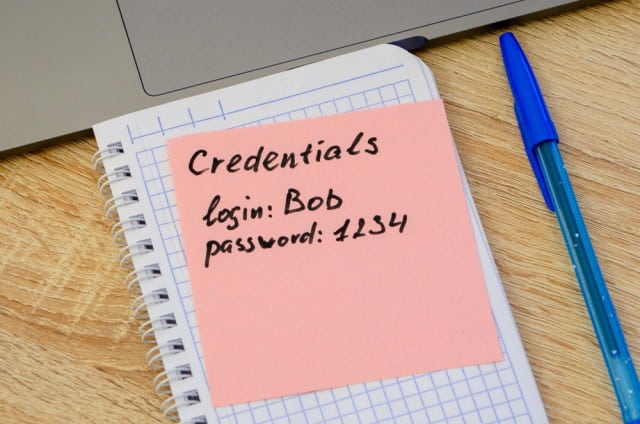
Managing identities between clouds is the top challenge for businesses
More than three-quarters (78 percent) of respondents to a new survey say managing user identities between multiple clouds is their number one challenge.
The study carried out by Forrester for Strata Identity finds 70 percent want to migrate to the cloud increase security and protect data. But at the same time 28 percent of companies are using four or more public/private clouds today and that's expected to more than double in two years to 65 percent.

Ransomware can encrypt 100,000 files in under 45 minutes
New research from Splunk's SURGe team looks at how quickly ten major ransomware strains, including Lockbit, Revil and Blackmatter, can encrypt 100,000 files.
The research shows that the median ransomware variant can encrypt nearly 100,000 files totaling 53.93GB in 42 minutes and 52 seconds. Encryption speeds vary between ransomware variants though with individual ransomware samples ranging from four minutes to three and a half hours to encrypt the same data.

Poor security practices still a challenge for hybrid work
Almost a third (29 percent) of workers still use the same passwords for both personal and work accounts, potentially compromising their organisation if a personal account gets hacked.
A new study of 2,000 UK adults carried out by OnePoll for professional services company Gemserv also shows 39 percent of respondents access corporate accounts and content from their personal devices often or always, with another 24 percent doing so sometimes.

81 percent of organizations have outages caused by expired certificates
A new report shows that 81 percent of organizations have experienced at least two or more disruptive outages caused by expired certificates in the past two years, up from 77 percent last year.
The report from machine identity platform Keyfactor, based on research by the Ponemon Institute, finds the cut in SSL/TLS certificate lifespans to one year in September 2020 has made it much more difficult to keep the pace with certificate issuance and management.

Most enterprise network assets are cloud-based but policies aren't keeping pace
Nearly 90 percent of device assets in the modern organization are cloud-based, meaning physical devices such as laptops, tablets, smartphones, routers, and IoT hardware represent less than 10 percent of total devices.
However, the latest State of Cyber Assets report from JupiterOne analyzed nearly 10 million security policies and finds that cloud-specific ones represent less than 30 percent of the total.

Pen testing tools increasingly used by threat actors
Legitimate penetration testing tools like Cobalt Strike, Impacket and RMM, are being used by threat actors because it's more efficient to use existing tools that are proven to be successful than to create new software.
The latest Threat Detection Report from managed detection and response firm Red Canary shows Cobalt Strike in particular has never been more popular, impacting eight percent of its customers in 2021.

F-Secure creates new corporate security brand
Cybersecurity company F-Secure is rebranding its corporate security business under the new name WithSecure and with a snazzy new logo, above.
Previously known as F-Secure Business, WithSecure will focus on corporate security products and solutions, while consumer security products and services remain available under the existing F-Secure name.

Standard virtual workspace security is improving but still not enough
The COVID-19 pandemic sparked a shift towards work-from-home or telecommuting arrangements, which many companies are saying they are likely to retain even after the pandemic. This new way of working or doing business has raised the demand for collaboration platforms and virtual rooms, which in turn create new cyber security challenges.
One recent flaw is referred to as a cross-site leak or XS-Leak and is linked to Slack's file-sharing feature. If exploited, malicious actors can potentially identify users outside of the workforce messaging platform. It allows cybercriminals to circumvent the web browser security feature called "same-origin policy," which stops browser tabs and frames of different domains from accessing each other’s data.

How enterprises responded to Log4Shell
When the Log4Shell vulnerability appeared in December last year the effects rippled across the cybersecurity world with potentially millions of devices affected.
A new study from Qualys takes a look at how enterprises responded to the vulnerability and how successful their remediation efforts were.

Organizations invest more in site reliability engineering but challenges still persist
Businesses are investing more in site reliability engineering but are being held back by outdated and manual processes, according to a new report.
A study of 450 site reliability engineers carried out by software intelligence company Dynatrace finds 88 percent say there is now more understanding of the strategic importance of their role than there was three years ago.

Extending detection and response -- why context is needed for security
The threat landscape is becoming more challenging from every angle. Security teams are understaffed and overworked and are still catching up after the wide-ranging effects of the pandemic. There’s unfortunately no end in sight as the skills gap widens and the complexity around IT management continues to grow with remote work programs going from sticking plaster to get through the initial lockdown to 'business as usual.' Bad actors are becoming more sophisticated each day. It has never before been this hard to keep your organization secure.
It’s no wonder that many security professionals fall into the trap of adopting numerous security tools to help them cope with these problems. In the hope of using the latest and seemingly greatest technology, CISOs think adding another security layer will reduce their risk exposure. If only it were that easy. Adding more technology can solve some of the issues, but it can also dilute team attention spans further, leading to more problems over time.

Cybercriminals impersonate Ukraine aid organizations in crypto phishing scams
It never takes long for threat actors to jump on a bandwagon and the Ukraine conflict is the latest event to prompt a wave of cryptocurrency phishing emails.
A new report of February's attack vectors from managed detection and response company Expel shows attempts to impersonate legitimate aid organizations to exploit people's desire to support refugees and victims with donations.

Chameleon phishing attack brings bad karma to email users
New research by Trustwave SpiderLabs has uncovered a phishing attack that is able to adapt itself to the user's email service in order to trick them into revealing their login credentials.
The attack acts like a chameleon, putting up a fake login page tailored for whatever email service the victim is using. So Gmail users for example will see a different page from Apple, Outlook or Yahoo! Mail users.

Linux and Raspberry Pi machines become top targets for credential hacking
New research shows that hackers are regularly gaining access to servers with the same commonly used -- often default -- passwords.
The data from Bulletproof also reveals that default Raspberry Pi usernames and logins feature prominently on the list of top default credentials used by hackers.

Hard truths from Ukraine: The government cannot save us in cyberwar
Amid our first global, multilateral, wholly unpredictable cyberwar, it is up to each of us to defend ourselves. No intelligence agency is certain how the cyber dimension of the Ukraine conflict will evolve; no military can stop a cyberattack. The situation catapults every digital organization into unknown territory.
If you think the battles on air, land and sea so far have defied expectations, consider the parallel cyber conflict. Three sober truths make this a perilous moment for us all -- especially as the Russian army’s logistical setbacks may make heightened cyber aggression against private interests more enticing.
